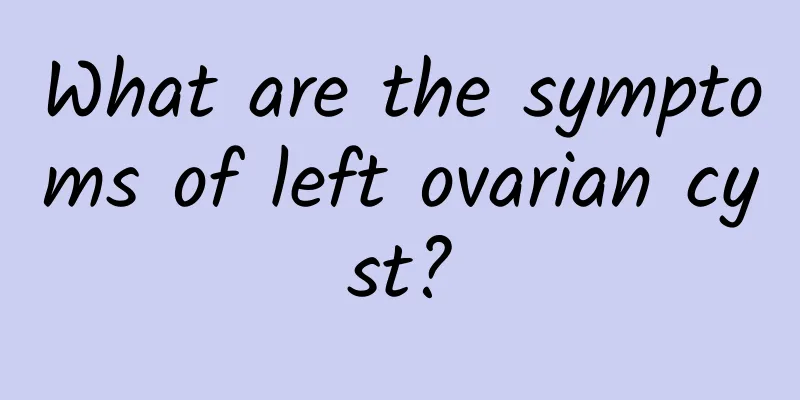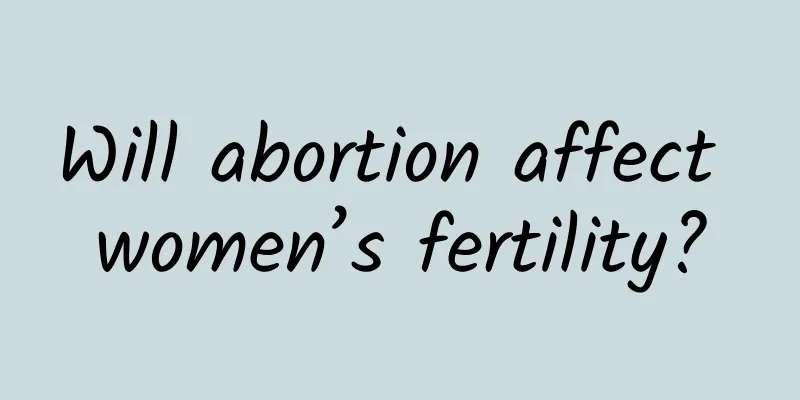What are the symptoms of left ovarian cyst?

|
Ovarian cysts are a type of ovarian tumor. Although the ovaries are small, they are functional and can produce eggs and steroid hormones. Therefore, treatment is the top priority. So what are the symptoms of left ovarian cysts? Are the symptoms obvious? In fact, left ovarian cysts have no obvious clinical manifestations in the early stage. Patients are often found during gynecological examinations for other diseases. As the tumor grows, its symptoms and signs vary depending on the development of the nature of the tumor. The main symptoms of left ovarian cyst are as follows: Abdominal enlargement and swelling: This is the most common phenomenon in the main complaint. Before noticing the enlargement of the abdomen, patients notice that their clothes or belts look tight, or they feel it occasionally in the morning. They find that there is swelling and bloating discomfort in the abdomen according to the abdomen. Lower abdominal discomfort: For the initial symptoms before the patient touches the lower abdominal mass, due to the weight of the tumor itself and the influence of intestinal peristalsis and posture changes, the tumor moves in the pelvic cavity, involving its pedicle and pelvic infundibulum ligament, causing the patient to feel swelling and drop in the lower abdomen or bone fossa. Menstrual disorders: Generally, ovarian or even bilateral ovarian cysts do not cause menstrual disorders because they do not destroy all normal ovarian tissues. Some uterine bleeding is not caused by endometrial congestion caused by endocrine or ovarian tumors; or other secretory effects caused by direct metastasis of ovarian malignant tumors to the endometrium. Compression symptoms: Huge ovarian tumors can cause dyspnea and palpitations due to compression of the diaphragm. Ovarian tumors combined with a large amount of ascites can also cause this symptom; but some ovarian tumor patients' dyspnea is caused by unilateral or bilateral pleural effusion; and it is often combined with ascites to form the so-called Meigs syndrome. Abdominal pain: If the tumor is uncomplicated, pain is rare. Patients with ovarian tumors may experience abdominal pain, especially if it occurs suddenly, with multiple pedicle torsion, or if the tumor ruptures, bleeds, or becomes infected. Abdominal pain and leg pain caused by malignant cysts often cause patients to seek emergency medical attention. |
<<: Three criteria for uterine fibroids requiring surgery
>>: Consequences of severe cervical erosion
Recommend
Do menopausal women need contraception?
As living standards continue to improve, the meno...
How to care after hysteroscopy? Supplement nutrients
For diseases such as uterine fibroids, ovarian cy...
A new choice for slim and fit women: sugar-free high-fiber soy milk
I work from 9 to 10 every day, eat out for three ...
Are there any side effects of abortion?
Are there any side effects of abortion? Abortion ...
Traditional Chinese Medicine has a magic formula for weight loss. Ear acupuncture and laser acupuncture are new
Recently, a method of weight loss through ear acu...
What should you eat after exercise? 6 golden combinations that won’t make you fat
It is best to eat one hour before exercise to avo...
What's wrong with delayed menstruation and very little flow?
What happens if my menstrual period is delayed an...
Is it too early for a woman to go through menopause at 49?
Is it too early for a woman to go through menopau...
How does Western medicine treat adnexitis?
How to treat adnexitis? According to gynecologica...
What causes ectopic pregnancy?
What are the causes of ectopic pregnancy? Experts...
What happened if menopause came back again after one and a half years of menopause?
What happened if menopause came back again after ...
What are the serious symptoms of adenomyosis?
Adenomyosis is one of the most common gynecologic...
Brief analysis of the symptoms of ectopic pregnancy at the time of onset
The symptoms of ectopic pregnancy are quite serio...
What are the causes of bacterial vaginosis?
In recent years, the incidence of bacterial vagin...
What are the consequences of congenital absence of vagina?
What are the effects of congenital absence of vag...









